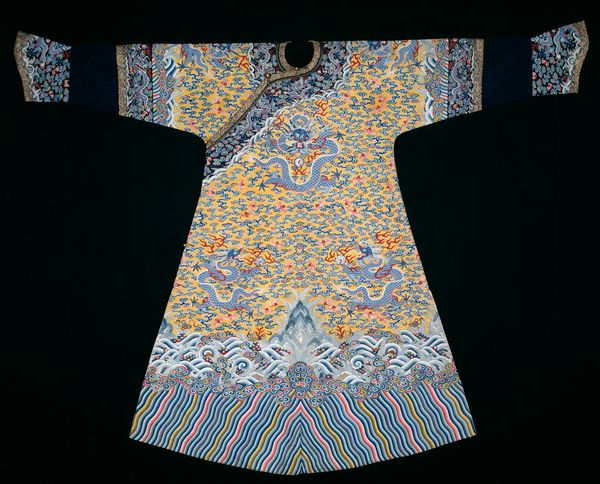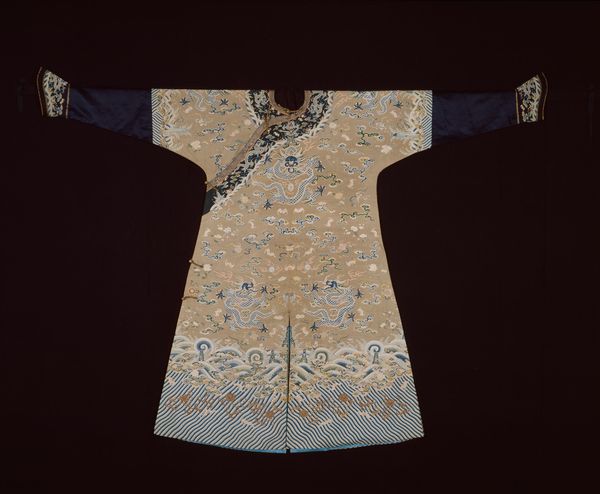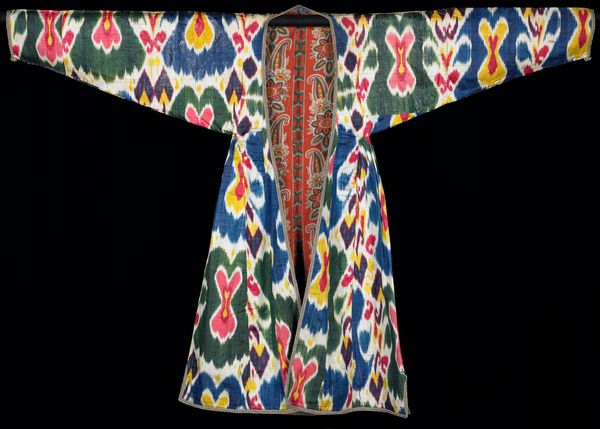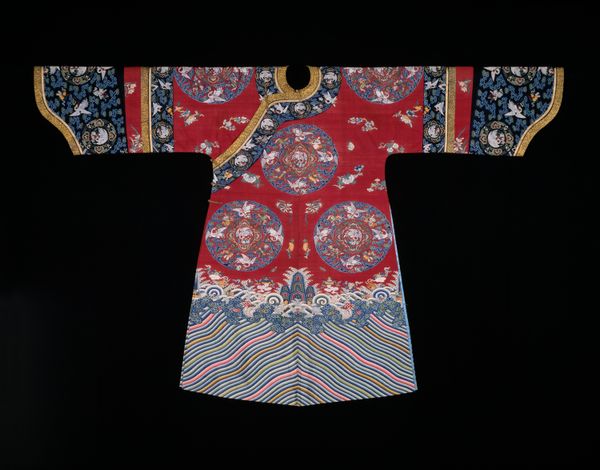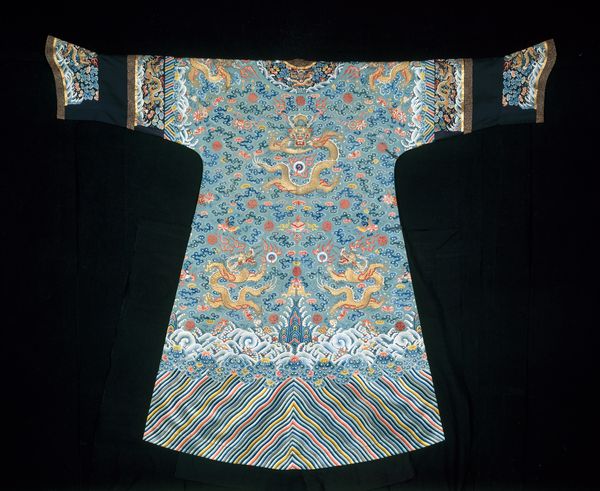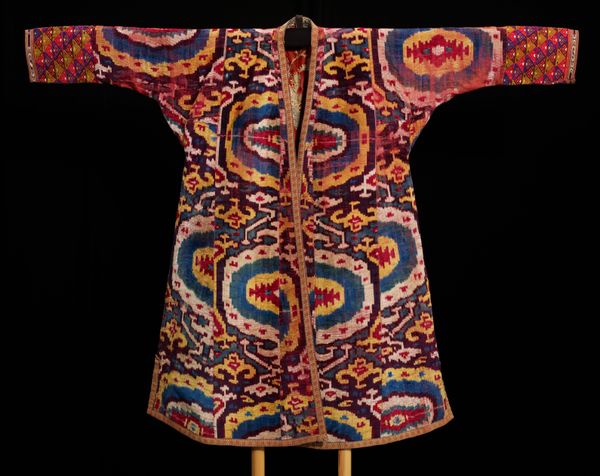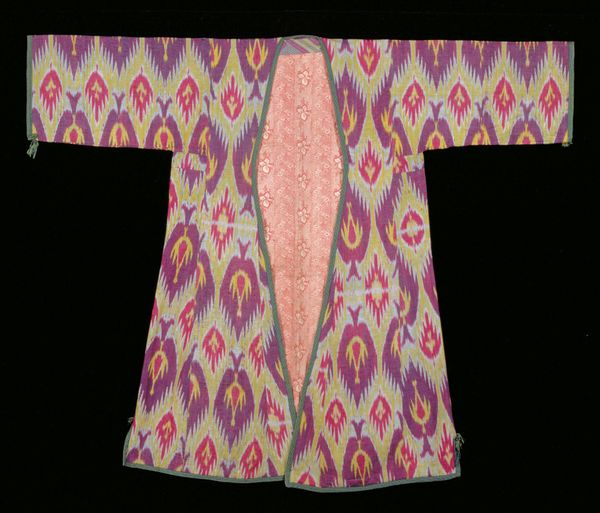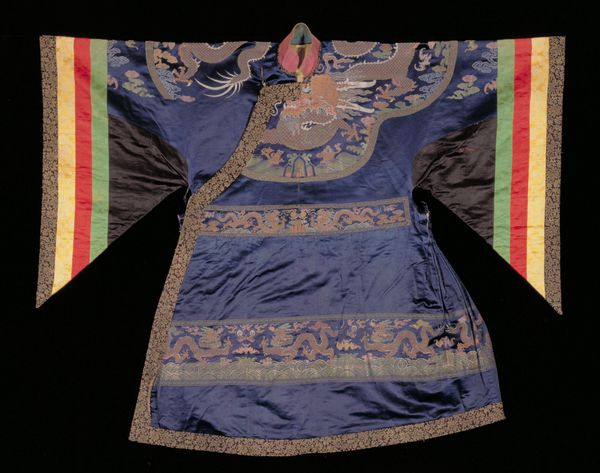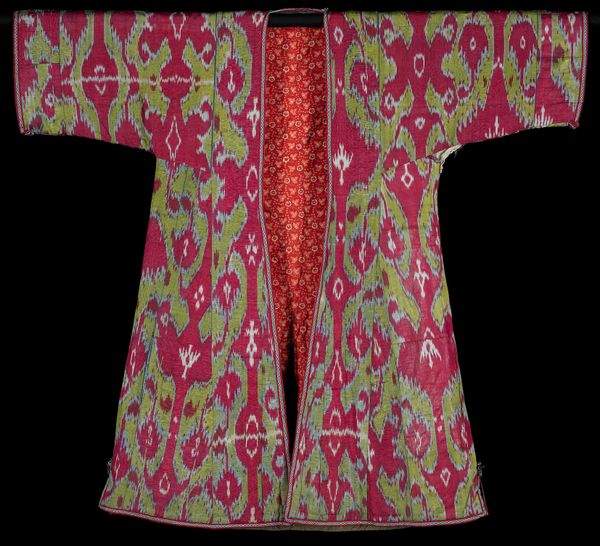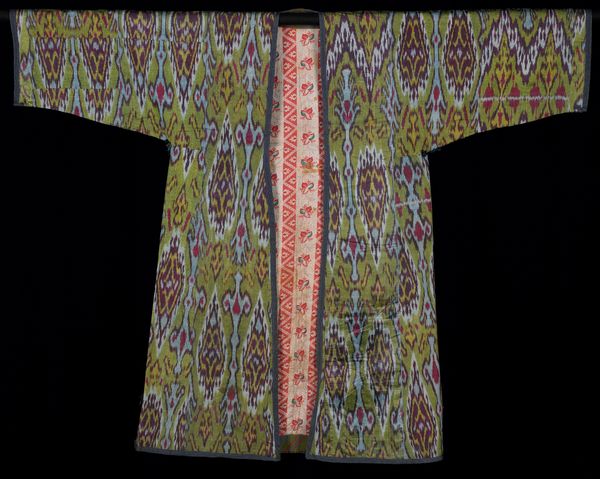
silk, textile
#
silk
#
asian-art
#
geometric composition
#
textile
#
geometric pattern
#
abstract composition
#
pattern repetition
Dimensions: 147.4 × 217.2 cm (58 × 85 1/2 in.) Shoulder to hem length: 60.5 cm (23 3/4 in.) Sleeve length: 25.7 cm (10 1/8 in.) Width at hem: 116 cm (45 3/4 in.) Width of sleeve panel: 40.4 cm (15 7/8 in.) Width of tapestry at collar: 8.0-8.8 cm (3 1/8-3 1/2 in.)
Copyright: Public Domain
Curator: What a radiant garment! My first thought is, power dressing of a very different era. It exudes authority, doesn't it? Editor: Absolutely. We're looking at a Woman's Jifu, a semiformal court robe, which potentially dates back to the Qing Dynasty, sometime between 1644 and 1911. It's currently part of the Art Institute of Chicago's collection. Curator: I'm struck by how every inch seems deliberate, meticulously planned. The dragons, of course, grab attention, but there's so much more happening. Editor: Yes, the dragon motif is crucial here, signaling imperial power and status. The layering of symbols, wave patterns, and clouds suggests a rich cosmology and social hierarchy woven into the fabric. Consider the limitations placed on women. How much power did this image grant the wearer? Curator: It certainly allowed them to visually participate in the emperor's authority. The robe broadcasts a woman’s position within the Manchu court system, acting almost like a walking, talking emblem. Editor: Precisely! The images aren’t arbitrary decoration; they're a visual language understood at court. Even the color palette – that dominating gold, with blue dragons, implies specific meanings and social status. Curator: How interesting, the repetition creates almost an overwhelming feeling. Could this "pattern-and-decoration" be an example of resisting a traditional male narrative by championing an alternative idea of beauty? Editor: Perhaps. I see a possible expression of power in this, as the Woman's Jifu could have played an integral role in court rituals. Curator: Ritual, and a deeply embedded visual rhetoric designed to project a certain persona and support the existing social structures. It makes you wonder about the wearer's individual experience within that framework, though, doesn't it? Editor: Definitely. These garments were tools within a political arena and works of art. The robe provides a lens through which to examine gender and identity within the Qing Dynasty. It is exciting to dive deep into the different narratives that it presents. Curator: I agree! Thank you for highlighting so many relevant contextual layers woven within it! Editor: And thank you, as always, for offering that critical social awareness, revealing deeper and richer complexities.
Comments
No comments
Be the first to comment and join the conversation on the ultimate creative platform.
